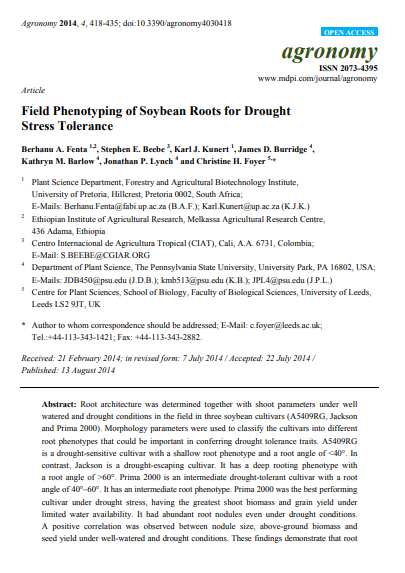Field phenotyping of Soybean roots for drought stress tolerance
Summary
Root architecture was determined together with shoot parameters under well-watered and drought conditions in the field in three soybean cultivars (A5409RG, Jackson, and Prima 2000). Morphology parameters were used to classify the cultivars into different root phenotypes that could be important in conferring drought tolerance traits. A5409RG is a drought-sensitive cultivar with a shallow root phenotype and a root angle of <40°. In contrast, Jackson is a drought-escaping cultivar. It has a deep rooting phenotype with a root angle of >60°. Prima 2000 is an intermediate drought-tolerant cultivar with a root angle of 40°–60°. It has an intermediate root phenotype. Prima 2000 was the best performing cultivar under drought stress, having the greatest shoot biomass and grain yield under limited water availability. It had abundant root nodules even under drought conditions. A positive correlation was observed between nodule size, above-ground biomass, and seed yield under well-watered and drought conditions. These findings demonstrate that root system phenotyping using markers that are easy to apply under field conditions can be used to determine genotypic differences in drought tolerance in soybean. The strong association between root and nodule parameters and whole plant productivity demonstrates the potential application of simple root phenotypic markers in screening for drought tolerance in soybean.
Open resource Download resource Access resource on external site

